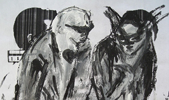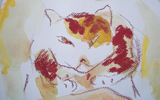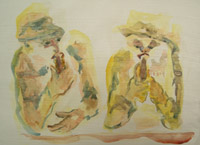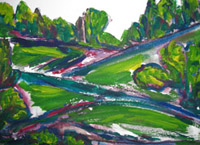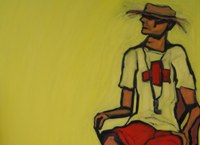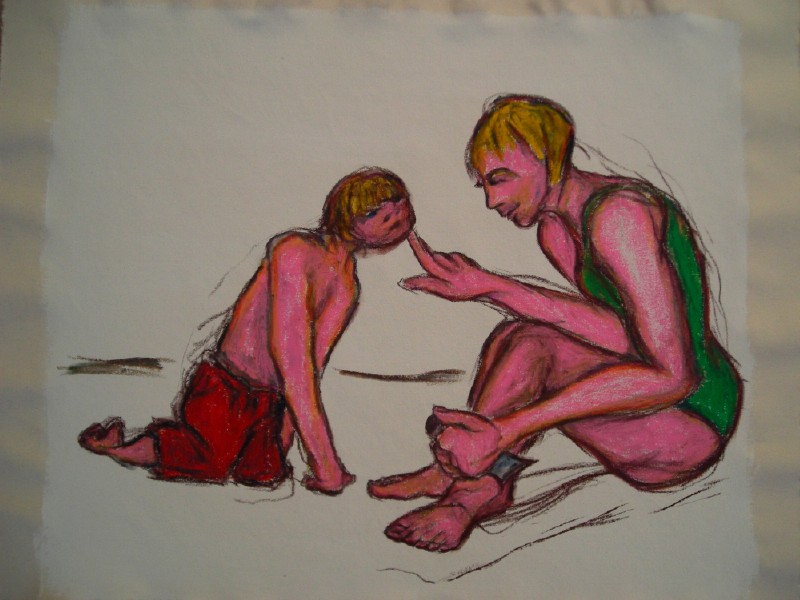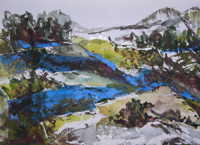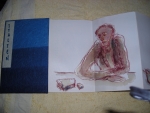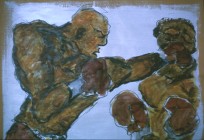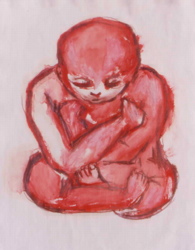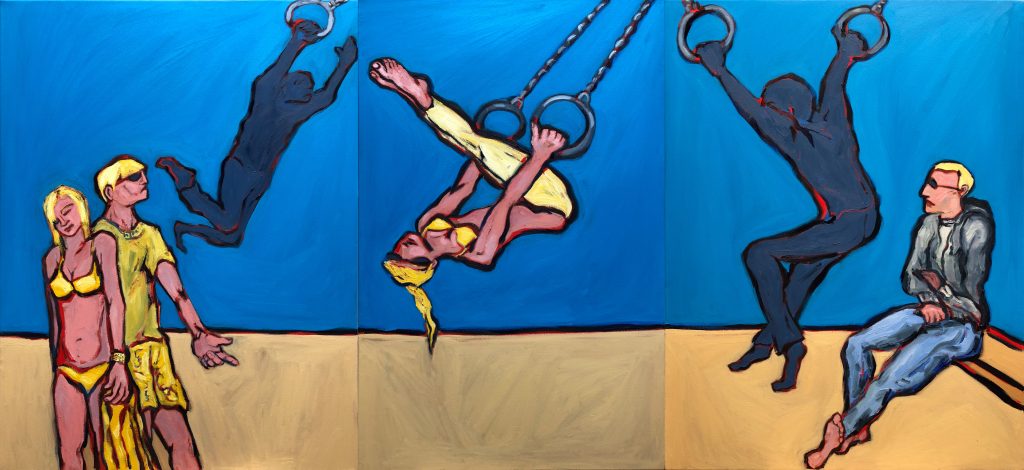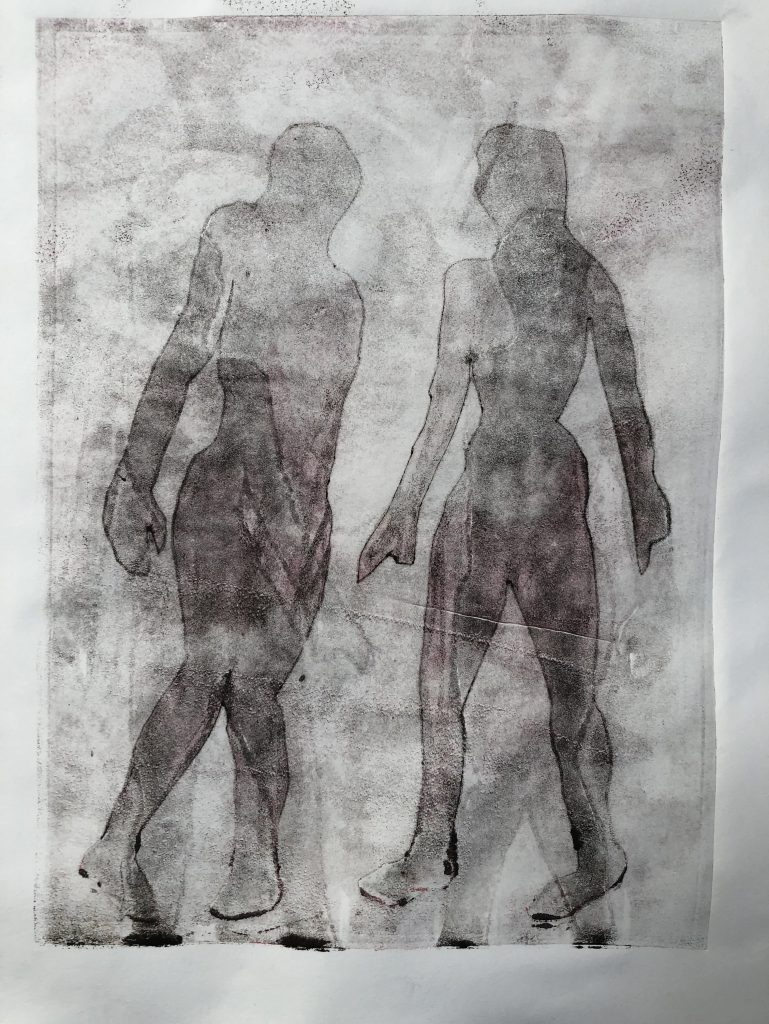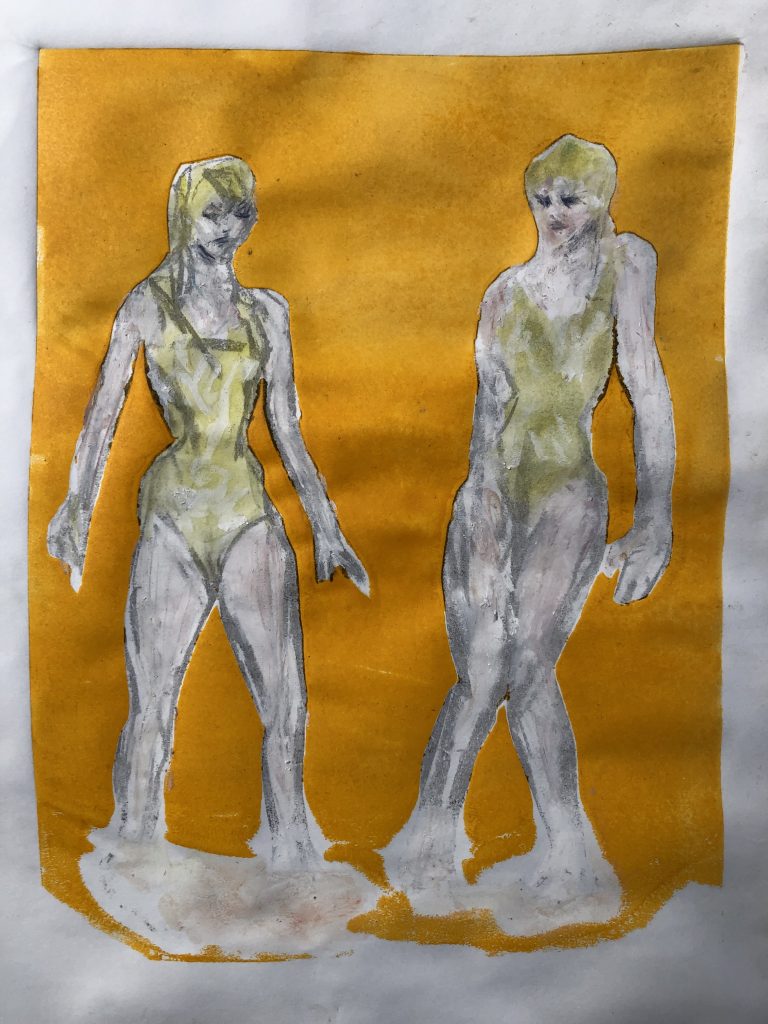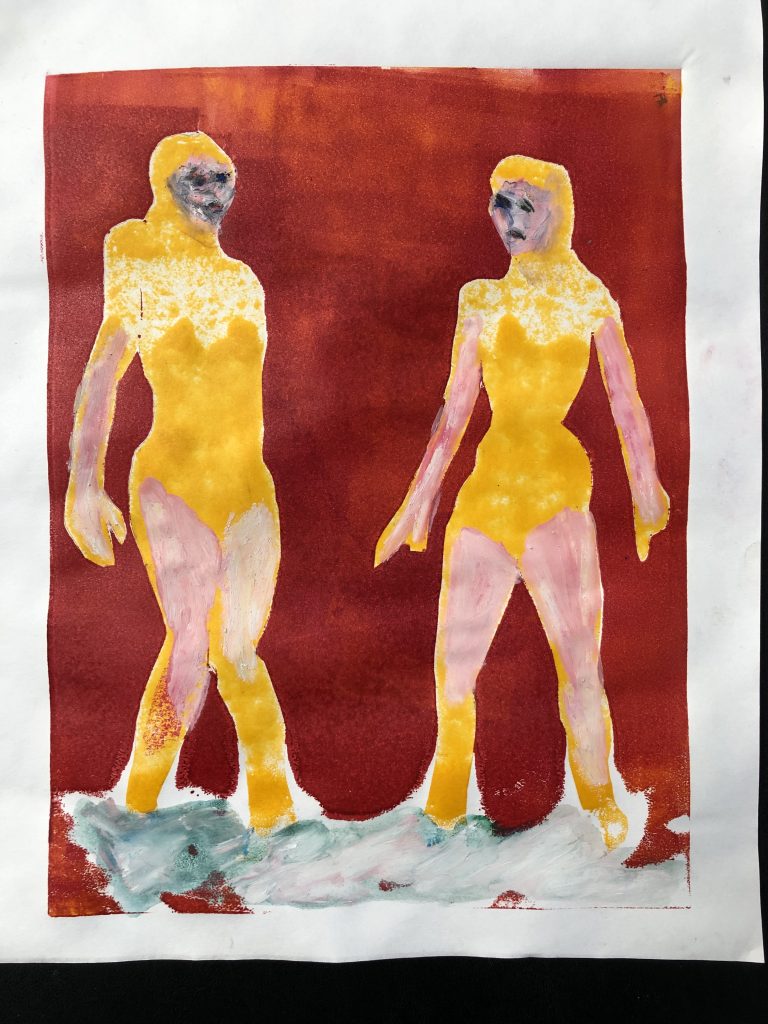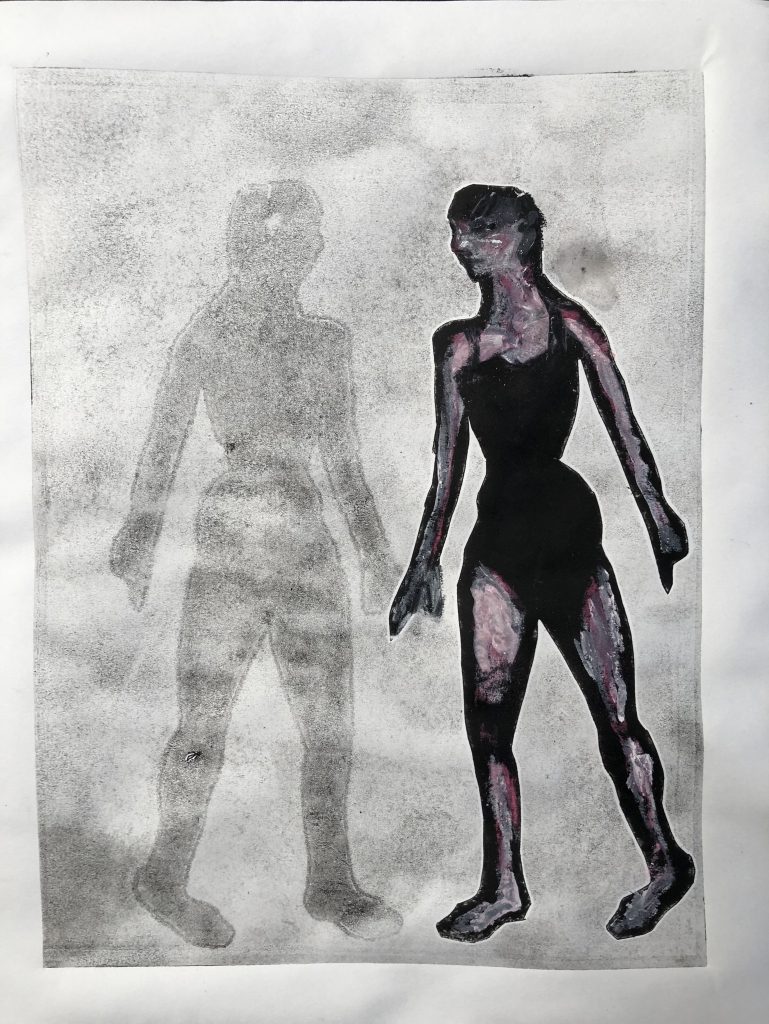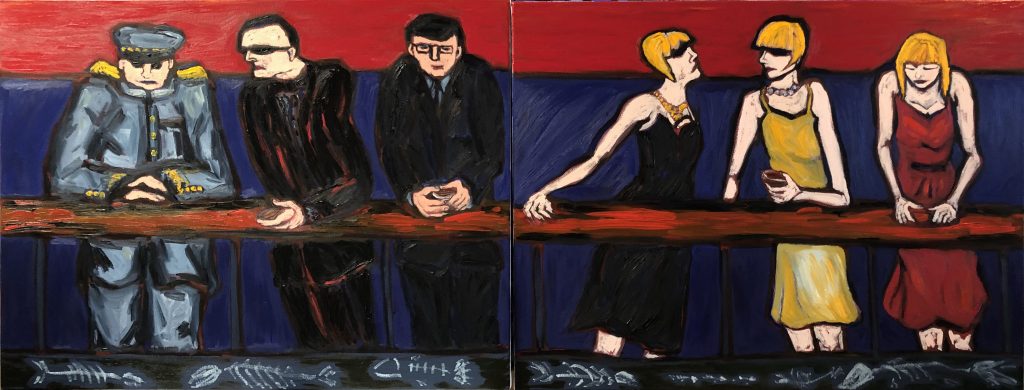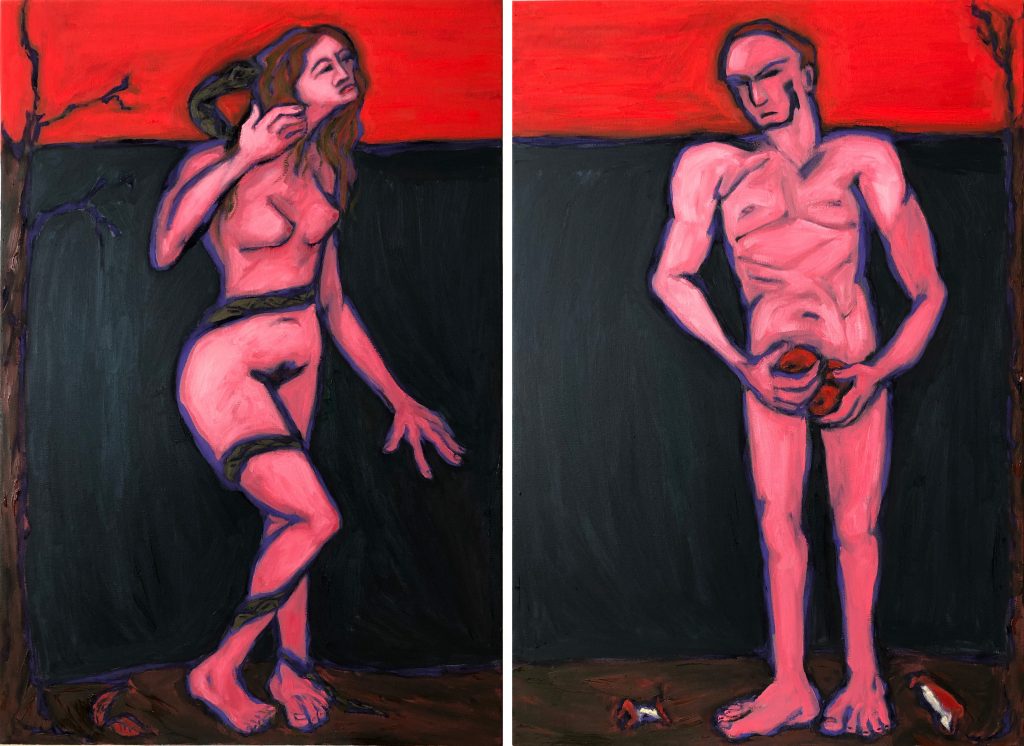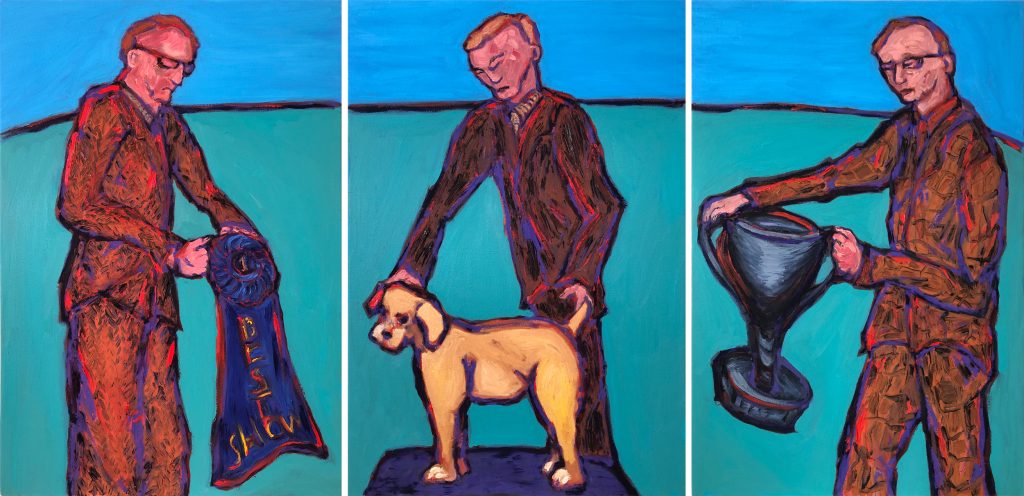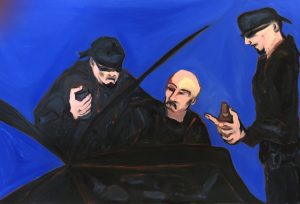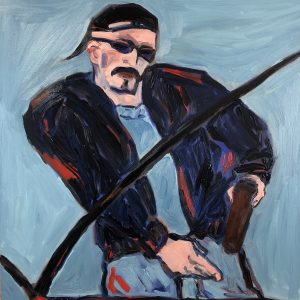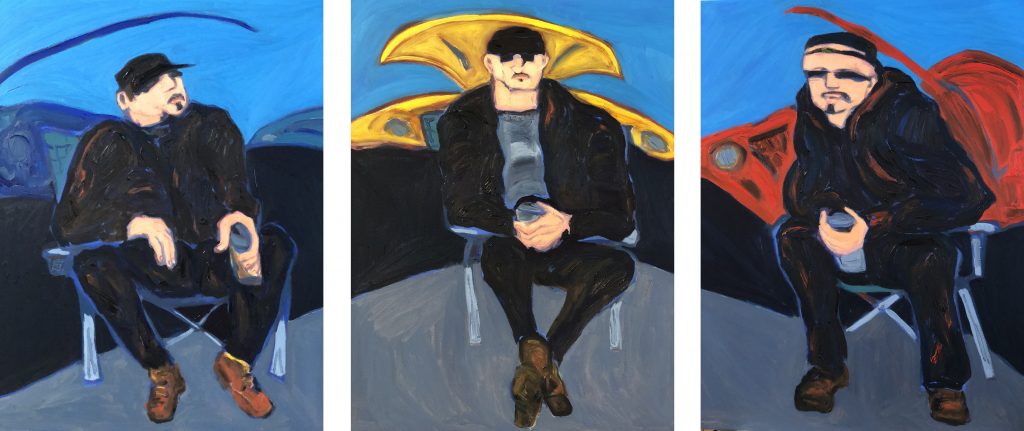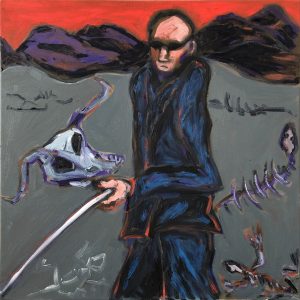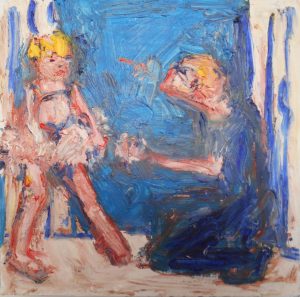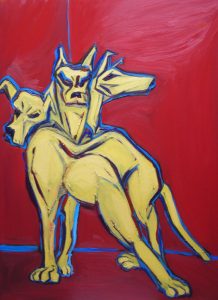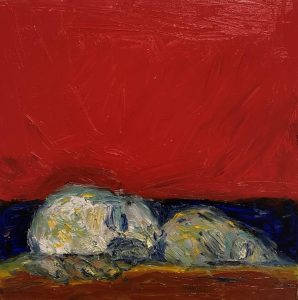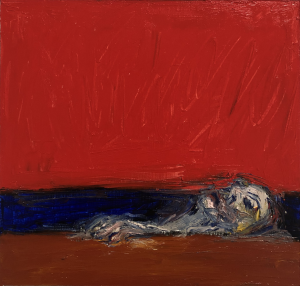all that we have had and all that we will lose
These works are on display at SHOH gallery in Berkeley, March 4th to April 8th 2020.
When the novel coronavirus epidemic forced a shelter-in-place order and local businesses temporarily shuttered, it seemed appropriate to preserve access to this collection of work: one that deals in anxiety around violent global transformation and imminent loss. Included below are images of the artworks accompanied by pieces from the exhibition catalogue.
— Michael Pruess
You can click on an image to see its info.
The terrible twins of modern art discourse are the words “decorative” and “illustrational”. Long after the jealous lovers Abstraction and Figuration politely agreed to go their separate ways, the words lingered like bedbugs. One is a put down for the primacy of plastic values over depictive content, the other a dismissal of the foundational narrative urge in the visual arts.
Of course, the jealous lovers had children. In Jan Wurm, their DNA is equally spread: An impulse to tell stories jostles with a pervasive instinct for gestalt. Take Sunday at the Beach, (2018), for instance. Whether frolicking, picnicking, posing, perambulating or simply soaking up the sun, each figure is imbued with individuality – captured in their body language, their relationships one to one another – while also forming punctuating marks of Caucasian flesh tone in a frieze-like arrangement of sand and sea and beach towel, the sand combed into vectors that respond contrapuntally along a vertical plane to the humanity populating the scene.
In respect to her balance of form and content, Wurm is a direct heir of the painters of the Nabis group. Think of the densely woven fabric of an Edouard Vuillard interior conveying the family dynamics of seamstresses at work; or of a kiss by Felix Vallotton where first the lovers meld into their embrace and then, as a solitary unity, melt into the bourgeois interior of their tryst; or of Pierre Bonnard’s bathing muse dissolving into the iridescence of surrounding tilework. Wurm’s figuration is more comparable in their toughened distortive energy to later expressionists than the Nabis, but her figures aren’t calligraphic signs struck within a theatrical setting in the way, say, of Max Beckmann, or indeed Francis Bacon. The setting in a typical Jan Wurm pulsates with the emotions of the personalities they support.
Both Bacon and Beckmann are forebears, it could be said, of the triptych arrangement of Under the Hood 3, (2018) where three “dudes” are seated on plastic chairs on a gray driveway that traverses the separate panels, each personage crowned and framed by their bonnet-open, almost zoomorphic vehicle. Each fellow is at one with his automobile; they are like dog owners where human and canine come to resemble one another over time. Wurm deftly conveys the vulnerable manly pride of men of few words at one with their metal toys, whether doing so through a locked jaw or in the defiant grip of a beer can.
Wurm is an artist who fuses social acuity and mythopoeic resonance. Within a consistent visual language always distinctly her own she is capable of significant stylistic shifts as subjects dictate, a quality the present exhibition demonstrates. The Shelter series, inspired by a poignant news report of a couple who tried to take refuge from engulfing wildfires in their swimming pool, has a painterly expressivity redolent of Francisco Goya and Philip Guston, with slivers of human presence sandwiched by layered lozenges of hot pure color. The cavorting gymnasts and pleasure seekers of Venice, by contrast, form an assorted cast in a predella of merry making: each figure is imbued with personality while operating pictorially as emblems within a flattened design, bringing the similarly compositional and individual characters in an Antonio Canaletto painting (of the other Venice) to mind. The literal shadows in Venice, which are virtually personalities in their own right, find echo in the outlined signifiers of deceased family members in the heavily symbolic yet all too human Passover celebration in the 2016 painting, Generations.
Guston and Goya are perfect points of reference for Wurm in her effortless double act of caprice and menace. Images that explore human competitiveness, whether of car owners, girl ballerinas or dog breeders, are rich in particularities of individual foibles and collective frenzy. Wurm steps back from socialized melodrama in the 2 Degrees C series of monotypes that are, arguably, her most expressively free and visually intriguing images. Pairs of female dancers in swimwear are either shadowy presences melting into an abstract gray ground, redolent of Rodin’s watercolors, or else they exude a sculptural quality in which the vehement nervous graphic lines act as a kind of armature, a contrast to the saturated color of costumes or background. Perhaps we are to read them as go go dancers? In any case, almost free of the social trappings that animate Wurm’s imagery with almost novelistic amplification, their human presence is on the verge of being stripped bare.
— David Cohen
- Shelter I 2019 Pigment stick on panel 10 x 10 in
- Shelter II 2019 Pigment stick on panel 10 x 10 in
- Shelter III 2019 Pigment stick on panel 10 x 10 in
all that we have had and all that we will lose
It has been a comfortable home: warm days, cool nights, gentle waves on a calm sea. The fruit trees have fed and sweetened life.
But awakening to climate change, now on the cusp of 2 Degrees C, the earth is scorched. Looking out across the landscape, the loss echoes.
— Jan Wurm












